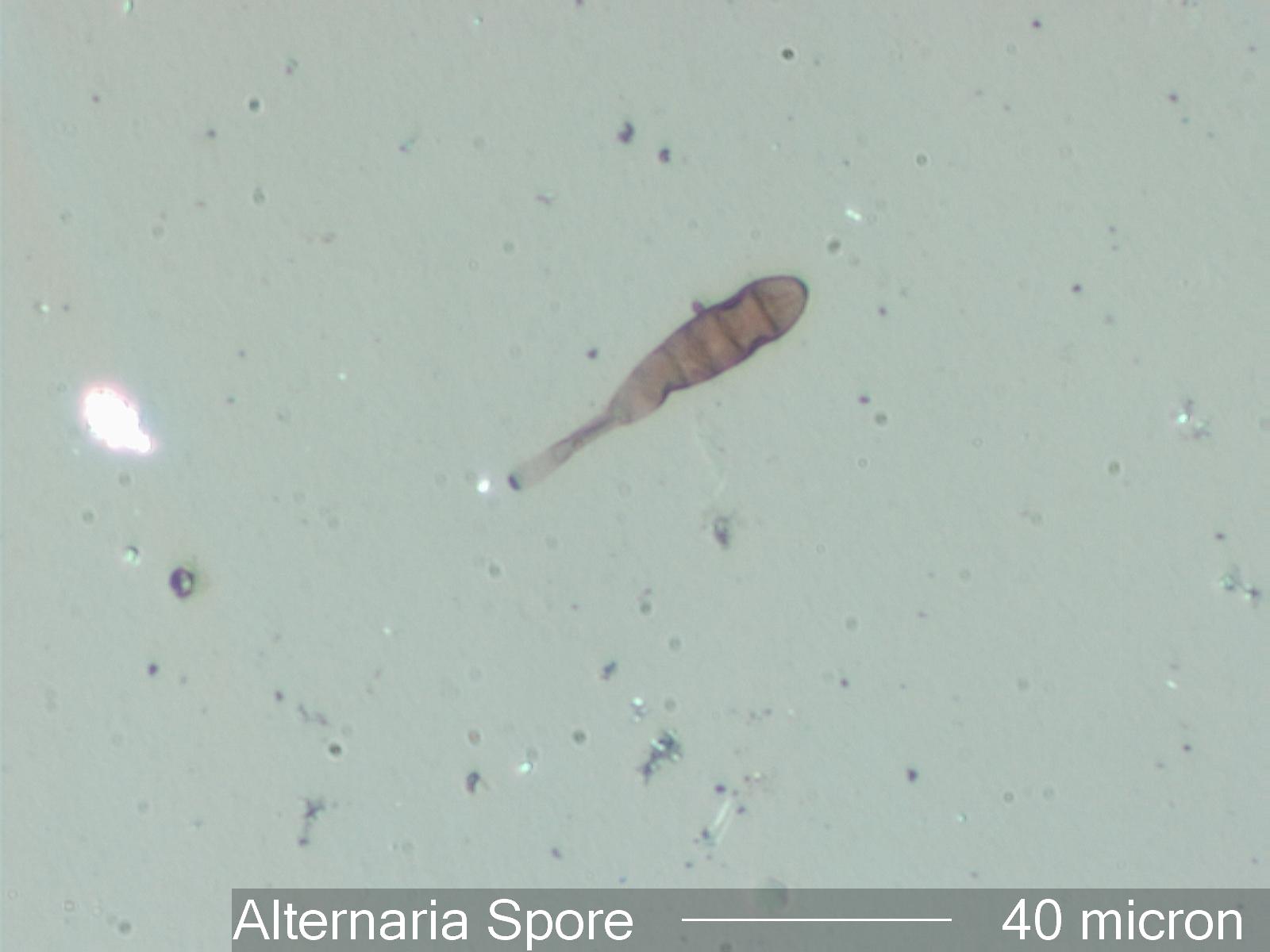Alternaria Spore From Transformer Oil
Definition/Function:
Alternaria fungal spores (conidia) are characterized by their "tail" and the regular divisions across their length (muriform septation, see references). There are many different species of the Alternaria fungus. They are very common in Temperate and Tropical climates. They do not grow in transformer oil.Significance in the Environment:
The ubiquitous nature of spores can be seen in the presence of this Alternaria spore found in an oil sample collected from a transformer. In this case the Alternaria spore simply indicates exposure to the atmosphere.
Alternaria may grow in homes and can be a potent allergen but their presence in an indoor tapelift or air sample does not generally indicate that they are the source of any health complaints unless the population is very high. Chains of Alternaria spores are typically found in tapelifts if Alternaria is growing in the building. Having more Alternaria spores in indoor air samples than are seen outdoors is not necessarily an indication that Alternaria is growing in the building unless it is orders of magnetude higher. The residence time for spores, pollens and other exterior dusts are long and a higher count of Alternaria spores in the building may simply reflect a higher outdoor level days, weeks, or months earlier. As with all fungae, if they are growing in a building then that indicates a moisture control problem. Control the moisture and the fungae will be controlled. Control the moisture first, then remediate the fungus.


